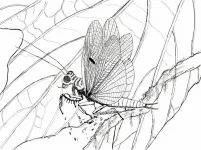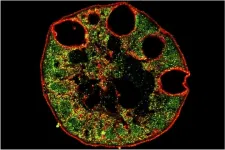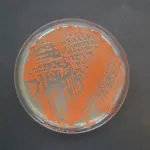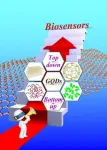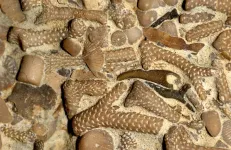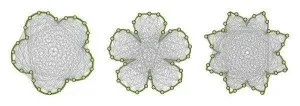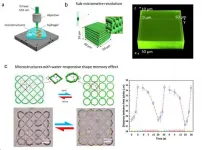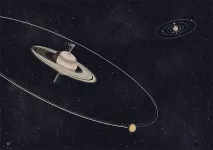(Press-News.org) A McGill-led research team has identified a new species of praying mantis thanks to imprints of its fossilized wings. It lived in Labrador, in the Canadian Subarctic around 100 million years ago, during the time of the dinosaurs, in the Late Cretaceous period. The researchers believe that the fossils of the new genus and species, Labradormantis guilbaulti, helps to establish evolutionary relationships between previously known species and advances the scientific understanding of the evolution of the most 'primitive' modern praying mantises. The unusual find, described in a recently published study in Systematic Entomology, also sheds light on wing evolution among mantises and their relatives more generally.
Digging through mountains of rubble
The research team, which included members from the Muséum national d'Histoire naturelle in Paris, and the Musée de paléontologie et de l'évolution in Montreal, found the specimens during fieldwork at an abandoned iron mine located in Labrador, near Schefferville (Quebec).
"Our days were spent essentially scouring the surface of piles of rubble that had been excavated from the mine," said Alexandre Demers-Potvin, a PhD student at McGill, a National Geographic Emerging Explorer, and the lead author on the paper. "Every now and then, one of the burgundy rocks on the ground would contain either a fossil leaf or a fossil insect, which we would then promptly collect. When the two fossils of Labradormantis guilbaulti were found in the field, none of us could identify them at first. It was only when I showed photos to paleoentomologist Olivier Béthoux, the senior author of this paper, that we started to think that we had the hind-wings of a previously unknown primitive mantis species."
The real surprise came when they were able to look more closely at a number of insect fossils in Dr. Béthoux's lab in Paris. Closer observations of certain specimens revealed they had not only the hind-wings but also the fore-wings of a hitherto unidentified species.
A single vein leads to revision of scientific understanding of mantis evolution
It was already known that most modern praying mantises, with their characteristic grasping forelegs, look very different from their oldest fossil ancestors. However, it has been difficult for paleontologists to trace mantis evolution more precisely because of the multiple gaps in the fossil record of these insects, combined with the very different anatomies of the three most primitive modern mantis groups (Chaeteessidae, Mantoididae and Metallyticidae).
By using Reflectance Transformation Imaging (RTI), an emerging photographing method in paleontology, the researchers were able to get a better view of the intricate network of veins lying along the fossil wings. They noticed a vein lying along the hind-wing's folding line (called AA2*) that is only found in one modern mantis lineage, the Chaeteessidae family. Following this key observation, they produced a revised evolutionary tree that included Labradormantis among some of its living and extinct relatives.
The identification of this single vein in this newly discovered species suggested that this structure had not evolved among Chaeteessidae in isolation, but that it was present in extinct relatives of our modern mantises as well. The Chaeteessidae lineage is simply the only modern mantis group to retain it.
"It's very rare to advance our understanding of insect evolution without seeing a complete insect specimen trapped in amber," said Hans Larsson, from McGill's Redpath Museum, and one of the authors on the paper. "In our paper, we present a very rare case in which a less well-preserved fossil has a similarly high impact. We hope that this study inspires investigations of other wing impression fossils to address similar questions elsewhere in the insect evolutionary tree."
The two specimens described in this study are now part of the collections of the Musée de paléontologie et de l'évolution, Montréal, curated by M. Cournoyer.
INFORMATION:
To read: "Wing morphology of a new Cretaceous praying mantis solves the phylogenetic jigsaw of early-diverging lineages" by Alexandre V. Demers-Potvin, Hans C.E. Larsson, Mario Cournoyer & Olivier Béthoux in Systematic Entomology
DOI: 10.1111/syen.12457
The research was funded by the National Geographic Society, the Natural Sciences and Engineering Research Council of Canada, Polar Knowledge Canada and the Fonds de recherche Nature et technologies Que?bec (FRQNT).
For more information about the larger research project on the fauna and flora of Cretaceous Quebec and Labrador - see video (in French), as well as the report written for the Musée de paléontologie et de l'évolution, published in the latest edition of Le Bulletin du MPE (in French)
About McGill University
Founded in Montreal, Quebec, in 1821, McGill University is Canada's top ranked medical doctoral university. McGill is consistently ranked as one of the top universities, both nationally and internationally. It is a world-renowned institution of higher learning with research activities spanning two campuses, 11 faculties, 13 professional schools, 300 programs of study and over 40,000 students, including more than 10,200 graduate students. McGill attracts students from over 150 countries around the world, its 12,800 international students making up 31% of the student body. Over half of McGill students claim a first language other than English, including approximately 19% of our students who say French is their mother tongue.
Contact:
Katherine Gombay
McGill Media Relations Office
1-514-717-2289
katherine.gombay@mcgill.ca
http://www.mcgill.ca/newsroom/
http://twitter.com/McGillU
A recent McGill study published in Environmental Science and Technology finds that annual methane emissions from abandoned oil and gas (AOG) wells in Canada and the US have been greatly underestimated - by as much as 150% in Canada, and by 20% in the US. Indeed, the research suggests that methane gas emissions from AOG wells are currently the 10th and 11th largest sources of anthropogenic methane emission in the US and Canada, respectively. Since methane gas is a more important contributor to global warming than carbon dioxide, especially over the short term, the researchers believe that it is essential to gain a clearer understanding of methane ...
WINSTON-SALEM, N.C. - Jan. 20, 2021 - Breast cancer is the second most common cancer among women in the United States, and cigarette smoking is associated with a higher incidence of breast cancer spread, or metastasis, lowering the survival rate by 33% at diagnosis.
While cigarette smoking's link to cancer is well-known, the role of nicotine, a non-carcinogenic chemical found in tobacco, in breast-to-lung metastasis is an area where more research is needed.
Now, scientists at Wake Forest School of Medicine have found that nicotine promotes the spread of breast cancer cells into the lungs.
The study ...
No evidence so far indicates that food or drinks can transmit the virus that causes COVID-19, but new research at Washington University School of Medicine in St. Louis suggests that people with problems in the upper gastrointestinal (GI) tract may be vulnerable to infection after swallowing the virus.
Studying tissue from patients with a common disorder called Barrett's esophagus, the researchers found that although cells in a healthy esophagus cannot bind to the SARS-CoV-2 virus, esophageal cells from patients with Barrett's have receptors for the virus, and those cells can bind to and become infected by the virus that causes COVID-19.
The study is published online Jan. 20 in the journal Gastroenterology.
"There ...
20 January 2021/Kiel. Numerous natural products are awaiting discovery in all kinds of natural habitats. Especially microorganisms such as bacteria or fungi are able to produce diverse natural products with high biomedical application potential in particular as antibiotics and anticancer agents. This includes the so-called red yeast of the species Rhodotorula mucilaginosa, isolated from a deep-sea sediment sample from the Mid-Atlantic Ridge and analyzed for its genome and chemical constituents by researchers from GEOMAR Centre for Marine Biotechnology (GEOMAR-Biotech) ...
In a paper published in NANO, researchers from Hubei, China discuss the top-down and bottom-up strategies for the synthesis of Graphene quantum dots (GQDs). The respective advantages and disadvantages of these methods are summarized. With regard to some important or novel ones, the mechanisms are proposed for reference. In addition, the application of GQDs in biosensors is highlighted in detail.
At present, various top-down methods, such as oxidative cutting, hydrothermal or solvothermal reactions, electrochemical oxidation, ultrasonic-assisted or microwave-assisted process, chemical vapor deposition (CVD) have been reported to produce GQDs. Meanwhile, the bottom-up methods have been ...
Changes in climate that occur over short periods of time influence biodiversity. For a realistic assessment of these effects, it is necessary to also consider previous temperature trends going far back into Earth's history. Researchers from the University of Bayreuth and the University of Erlangen-Nuremberg show this in a paper for Nature Ecology and Evolution. According to the paper, future climate-related species extinction could be less severe than predictions based only on the current trend of global warming. However, the researchers do not give the all-clear. At present, the effects of climate change are being exacerbated ...
In nature, many things have evolved that differ in size, color and, above all, in shape. While the color or size of an object can be easily described, the description of a shape is more complicated. In a study now published in Nature Communications, Jacqueline Nowak of the Max Planck Institute of Molecular Plant Physiology and her colleagues have outlined a new and improved way to describe shapes based on a network representation that can also be used to reassemble and compare shapes.
Jacqueline Nowak designed a novel approach that relies on a network-based shape representation, named visibility graph, along with a tool for analyzing shapes, ...
The study explains the benefits of both the wing shape and the flexibility of their wings.
The Lund researchers studied the wingbeats of freely flying butterflies during take-off in a wind tunnel. During the upward stroke, the wings cup, creating an air-filled pocket between them. When the wings then collide, the air is forced out, resulting in a backward jet that propels the butterflies forward. The downward wingbeat has another function: the butterflies stay in the air and do not fall to the ground.
The wings colliding was described by researchers almost 50 years ago, but it is only in this study that the theory has been tested on real butterflies in free ...
Three-dimensional (3D) direct laser writing (DLW) based on two-photon polymerisation (TPP) is an advanced technology for fabricating precise 3D hydrogel micro- and nanostructures for applications in biomedical engineering. Particularly, the use of visible lasers for the 3D DLW of hydrogels is advantageous because it enables high fabrication resolution and promotes wound healing. Polyethylene glycol diacrylate (PEGda) has been widely used in TPP fabrication owing to its high biocompatibility. However, the high laser power required in the 3D DLW of PEGda microstructures using a visible laser in a high-water-content environment limits its applications to only those below the biological laser power safety level.
In a new paper ...
Rather like David versus Goliath, it appears that Saturn's tilt may in fact be caused by its moons. This is the conclusion of recent work carried out by scientists from the CNRS, Sorbonne University and the University of Pisa, which shows that the current tilt of Saturn's rotation axis is caused by the migration of its satellites, and especially by that of its largest moon, Titan.
Recent observations have shown that Titan and the other moons are gradually moving away from Saturn much faster than astronomers had previously estimated. By incorporating this increased migration rate into their calculations, the researchers concluded that ...
